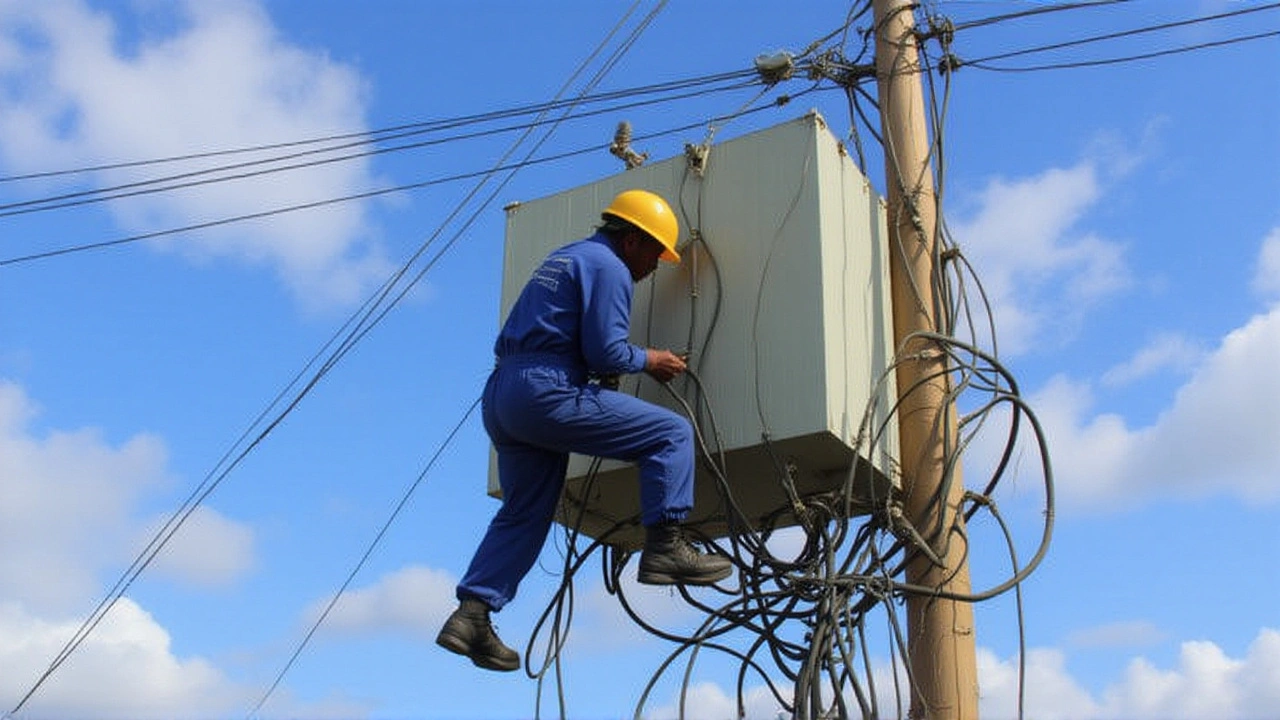Kenya Power News and Updates
When talking about Kenya Power, the state‑owned utility responsible for electricity transmission, distribution and retail across Kenya. Also known as Kenya Electricity Transmission Company, it plays a central role in powering homes, businesses and industry. Below we break down the key forces shaping its operations today.
How Kenya Power Connects with the Wider Energy Landscape
Kenya Power encompasses the entire national grid, linking generation plants to end‑users. This makes it tightly linked to KenGen, the country’s largest electricity generator, which supplies over 70% of the grid’s power. The relationship between Kenya Power and KenGen requires coordinated scheduling to balance supply and demand, especially as renewable projects like geothermal and wind come online.
The Kenyan government, through the Energy and Petroleum Regulatory Authority (EPRA), regulates tariffs, service standards and investment incentives. Recent policy shifts aim to lower consumer rates while encouraging renewable energy development. This regulatory push influences Kenya Power’s rollout of smart meters, grid expansion into rural counties, and its push to reduce reliance on diesel generators.
Another crucial factor is grid infrastructure. Upgrading substations, reinforcing transmission lines and adopting digital monitoring tools are all part of Kenya Power’s strategy to curb outages and improve voltage stability. Investment in these assets enables the utility to meet the growing demand from urbanization, industrial parks and the booming tech sector.
Renewable integration brings its own set of challenges. As Kenya adds more geothermal, solar and wind capacity, Kenya Power must manage variability. This is where energy storage and demand‑side management become essential. EPRA’s recent guidelines on capacity building encourage the utility to partner with private firms for battery storage projects, which help smooth out peaks and protect the grid from sudden drops.
Rural electrification remains a priority. The government’s “Last Mile” program, backed by World Bank financing, targets communities still off the grid. Kenya Power’s role here is to extend low‑voltage lines, install prepaid meters and train local technicians. These efforts reduce reliance on kerosene and diesel, improve education outcomes, and stimulate small‑scale entrepreneurship.
Tariff structures also shape consumer behavior. EPRA introduced a tiered pricing model where higher consumption incurs higher rates, aiming to promote energy efficiency. Kenya Power’s billing systems have been upgraded to support this model, and the utility now offers online portals for easy payment and usage monitoring.
Customer service reforms are another focus area. By deploying chatbots, expanding call‑center capacity, and launching mobile apps, Kenya Power seeks to shorten response times for fault reports. Data from the past year shows a 15% drop in average outage restoration time, illustrating the tangible impact of these digital tools.
Looking ahead, several strategic initiatives are on the horizon. A major grid‑interconnection project with Ethiopia promises to trade surplus power and enhance regional stability. Meanwhile, pilot projects on solar‑powered mini‑grids in remote northern counties are testing new business models that could be scaled nationwide.
All of these dynamics—regulatory shifts, renewable integration, infrastructure upgrades and customer‑centric innovations—intersect to shape the future of electricity in Kenya. Below, you’ll find a curated list of the most recent articles covering everything from tariff announcements and outage responses to renewable‑energy milestones and policy debates. Dive in to stay informed about how Kenya Power is powering the nation’s growth.

KPLC Schedules Power Cuts in Machakos, Uasin Gishu & Kiambu on April 29
Kenya Power schedules extensive power cuts on April 29 across Machakos, Uasin Gishu and Kiambu, aiming to upgrade the grid. Residents and businesses urged to prepare for up to nine‑hour outages.




